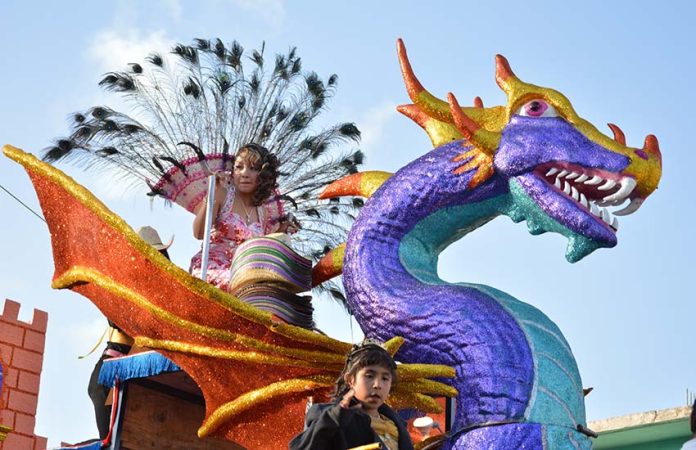Mexico is not the first country you associate with Carnaval celebrations. True, it lacks the famous mega-celebrations of Río de Janeiro, Venice and New Orleans, but carnaval celebrations not only exist here, they have a unique history, perhaps best reflected in Mexico City.
The nation’s capital lacks a city-wide Carnaval — true — but there are many small celebrations in various boroughs. This is the result of both the introduction and repression of Carnaval along with the later phenomenal growth of the city.
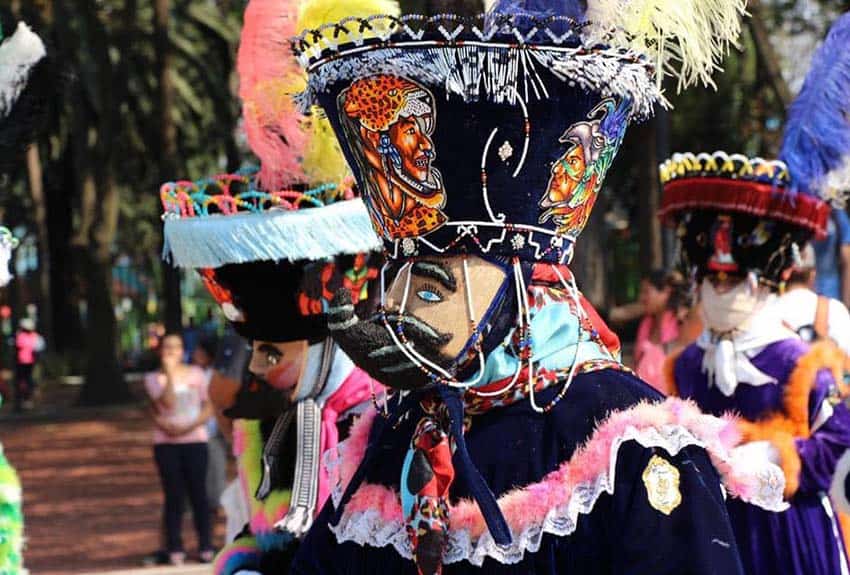
The Spanish introduced Carnaval early. It was accepted as it has similarities to Wayeb — a five day period when faces were covered and there were various planting rituals that featured colorful dress. Over time, the various traditions merged to create a wide array of celebrations, which were tolerated by authorities at first.
But one tradition, the mocking of authority and the status quo, would lead to repression.
Restrictions began in 1679 with the banning of clergy costumes, then bans on cross-dressing and the mock executions of authority figures. By 1780, Carnaval was officially banned in the entire territory.
It disappeared from the major cities, but managed to survive in isolated villages, mostly in Morelos, Veracruz, Oaxaca, Puebla and Tlaxcala. Those held in cities such as Mazatlán, Cozumel and Veracruz are revivals starting in the late 19th century.
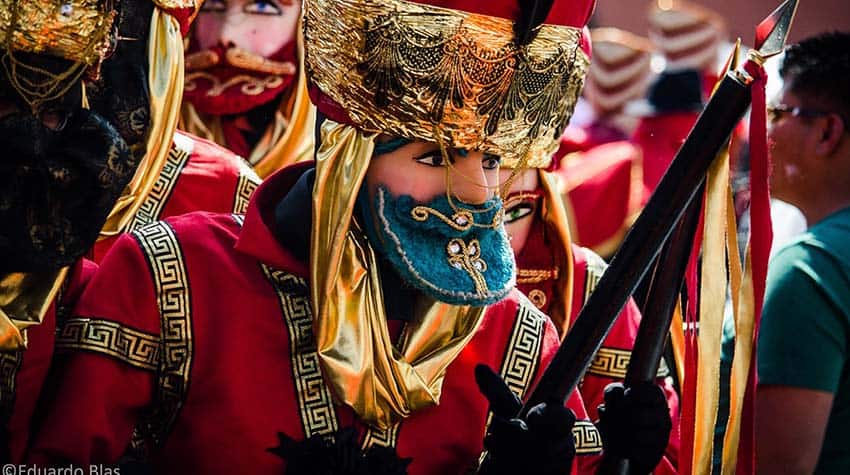
Mexico City today stretches over almost all of the Valley of Mexico, including areas that were farmlands and villages in boroughs like Iztapalapa, Iztacalco, Tlalpan, Milpa Alta and Xochimilco. For many small communities, local Carnavals are one way to maintain a distinct identity after their land was swallowed up in a sea of grey urban blight.
Diego Rodarte, spokesman for the Ministry of Original Peoples, Neighborhoods and Resident Indigenous Communities of Mexico City, says, “They are all important to conserving the identities of these communities.”
“Every borough and every community has elements that are different … and give a unique touch to their Carnavals.”
These events show their colonial roots with a focus on groups of dancers organized into comparsas, who are dressed in colorful costumes. Costume styles vary with names like charros and chinelos, but all are ornate and almost all use masks that imitate upper-class Spanish or other Europeans from Mexican history.
Many of these costumes once existed to mock overlords, but today they are worn out of tradition.
One notable trait of these celebrations is that many are not limited to the few days before Ash Wednesday. Carnaval season can last through Lent, with neighboring communities assigned different dates for their activities. It is estimated that over 200,000 people attend the various events all over the city, but they remain very local events.

The largest and best-known of Mexico City’s Carnavals are in the Iztapalapa borough, notably in the neighborhoods of Los Reyes Culhuacán, Santa Cruz Meyehualco, Santa María Aztahuacán, Santa Martha Acatitla, San Lorenzo Tezonco, San Sebastián Tecoloxtitlan, Santiago Acahualtepec and Santa María Tomatlán.
On the day before Ash Wednesday, representatives of these eight communities come together to dance in the borough seat of Iztapalapa. Charros are the traditional dancers here.
In Santa Anita and other locations in the Iztacalco borough, the traditional costume is called the Catrín. Like the Day of the Dead figure of the same name, he is a 19th-century dandy in top hat and tails, but the mask is that of a very-much-living human being.
The largest of the borough of Tlahuac’s celebrations is in San Francisco Tlaltenco, which features the chinelos and charros. The Burning of Judas tradition — typically a separate event elsewhere involving the destruction of an effigy of the biblical figure — is considered part of Carnaval here.
Chinelos also dominate festivities in the boroughs of Milpa Alta and Xochimilco, the latter which fills with over 2,000 dancers from 30 comparsas (squads) who dance for three days in the borough seat.
There are fewer Carnavals in other parts of the city, such as in Cuajimalpa in the west and Santa Isabel Tola in the north. One unusual Carnaval is that of the neighborhood of Peñon de los Baños in the Venustiano Carranza borough.
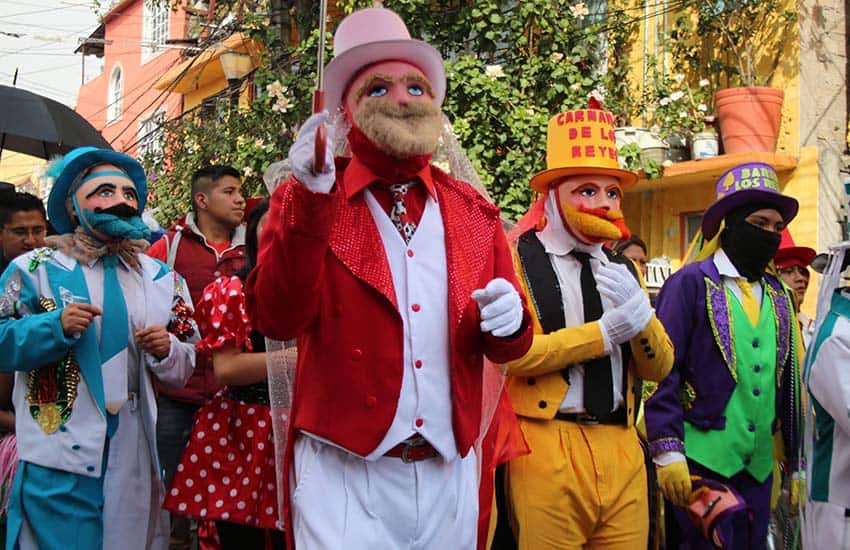
This one is a recreation of the famous Carnaval of Huejotzingo, Puebla, established only a few decades ago when many people from there settled in the neighborhood. Their new location means that new elements have been appearing. Dancers in modern masks and costumes based on popular culture appear with the name of chinchinas, or sometimes huehueches. Carnaval queens are crowned, and floats accompany the dancers.
Even giant alebrijes make appearances, undoubtedly influenced by the city’s popular Alebrije Parade in October.
Alcohol and rowdiness still plague Carnavals, even the small traditional ones. Efforts to combat this include events for families and children and sometimes even separate family-friendly Carnavals that often occur in the daytime.
Governments and civic organizations promote food, crafts and other local culture instead of partying. Drinking on the streets is generally prohibited, but enforcement varies.
Both the city and borough governments work to preserve these independent Carnaval celebrations. Xochimilco has directly sponsored activities since 2016. The Mexico City government has no interest in a city-wide revival or recreation but rather works to promote the cultures of the outer boroughs.
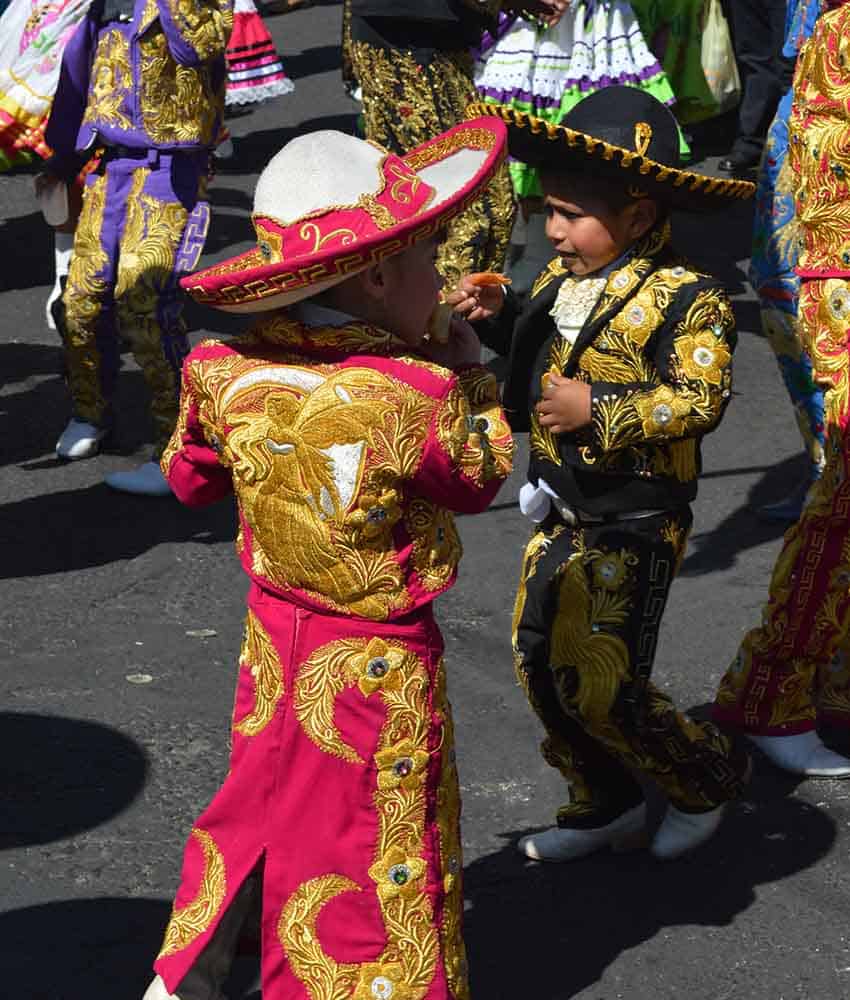
The city sponsors an annual Gran Carnaval de México in December as a way to bring comparsas and other civic organizations together and to not compete with the traditional events.
There is no one site listing all the Carnavals and dates, but here are dates for a few Mexico City Carnaval celebrations in various locations.
February 18: in the borough of Cuajimalpa and in the neighborhood of Zapotla.
February 18–19; 24–27: in the original town of Santa María Aztahuacán.
February 17–20: in the original town of Santa Marta Acatitla.
February 26: in the San Francisco Tlaltenco neighborhood. Celebrations also take place on weekends in March and April. Recommended days to visit are March 5 and 12.
March 3–6: in the original town of Santa Cruz Meyehualco.
March 10–13: in the original town of San Sebastian Tecoloxtitlan.
March 11–14: in the Santa Isabel Tola neighborhood.
March 17: in the original town of Santiago Acahualtepec.
Leigh Thelmadatter arrived in Mexico 18 years ago and fell in love with the land and the culture in particular its handcrafts and art. She is the author of Mexican Cartonería: Paper, Paste and Fiesta (Schiffer 2019). Her culture column appears regularly on Mexico News Daily.
